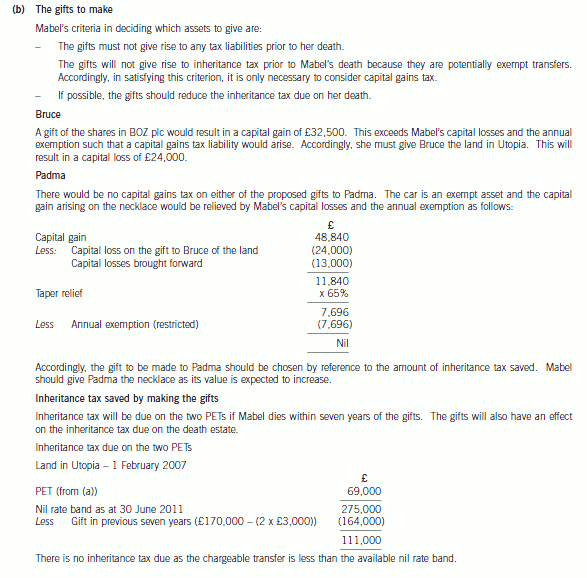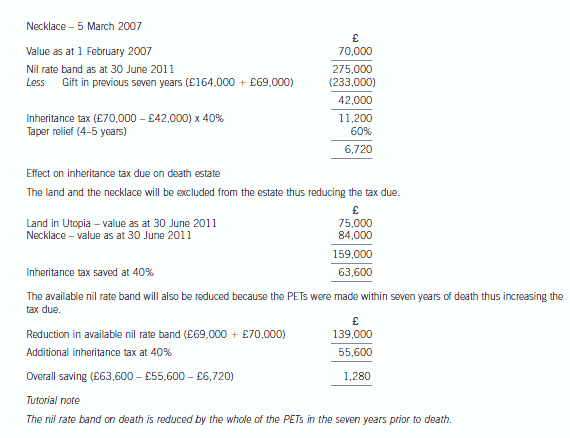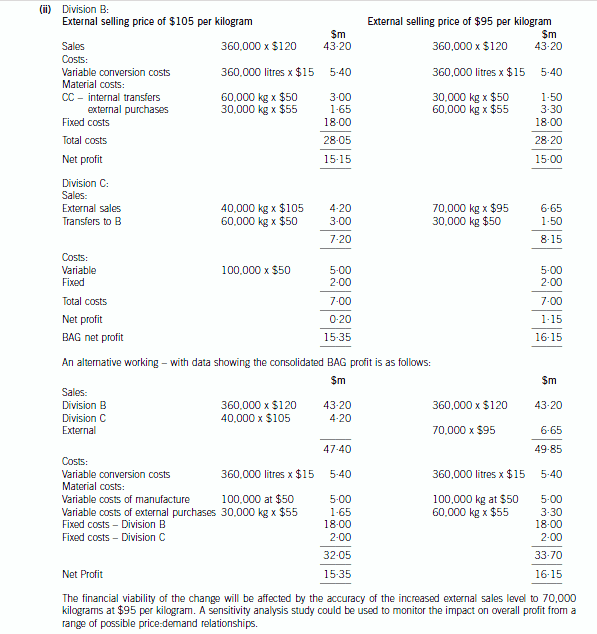2020年ACCA考试:管理会计专业词汇汇总(14)
发布时间:2020-10-12
距离ACCA考试还有1个多月的时间,各位小伙伴备考的如何了啊,今日51题库考试学习网为大家分享“2020年ACCA考试:管理会计专业词汇汇总(14)”的相关知识点,一起过来复习巩固一下吧。
ACCA财经词汇汇编:Floor
Trader
【English Terms】
Floor Trader
【中文翻译】
出市代表、场内交易商
【详情解释/例子】
在交易所场内专为自身客户执行交易的交易所成员。
ACCA财经词汇汇编:Flotation
【English Terms】
Flotation
【中文翻译】
发行、上市
【详情解释/例子】
私有公司通过发行股票,并邀请公众购买股票而成为公开公司的过程。
ACCA财经词汇汇编:Forbearance
【English Terms】
Forbearance
【中文翻译】
暂缓行使(债权人权利)
【详情解释/例子】
贷方或债权人暂缓债务人偿还贷款的责任,目的在于容许债务人偿还过期款项。
ACCA财经词汇汇编:Follow-on
Offering
【English Terms】
Follow-on Offering
【中文翻译】
后续发行
【详情解释/例子】
一家企业在首次公开上市后发行更多股票。
ACCA财经词汇汇编:Flotation
Cost
【English Terms】
Flotation Cost
【中文翻译】
发行成本
【详情解释/例子】
发行新证券牵涉的成本。
ACCA财经词汇汇编:Force
Majeure
【English Terms】
Force Majeure
【中文翻译】
不可抗力
【详情解释/例子】
这项合约条款免除合约方因无可预见的事件而未能履行合约的责任。
ACCA财经词汇汇编:Forced
Conversion
【English Terms】
Forced Conversion
【中文翻译】
强制转换
【详情解释/例子】
指可转换证券的发行人行使买回权,强制投资者将证券转换成为预定数目的证券。
ACCA财经词汇汇编:Foreign
Currency Effects
【English Terms】
Foreign Currency Effects
【中文翻译】
外币效应
【详情解释/例子】
外币变动影响国外投资的幅度。
ACCA财经词汇汇编:Foreign
Bond
【English Terms】
Foreign Bond
【中文翻译】
国外债券
【详情解释/例子】
国外公司在本地市场发行的本地货币债券。
ACCA财经词汇汇编:Forecasting
【English Terms】
Forecasting
【中文翻译】
预测
【详情解释/例子】
分析历史及当时数据,以估计未来趋势的程序。
ACCA财经词汇汇编:Fortune 500
【English Terms】
Fortune 500
【中文翻译】
财富 500
【详情解释/例子】
美国每年500家最大企业的名单,名单根据最近期收入数据编制。
以上就是51题库考试学习网带给大家的全部内容,相信小伙伴们都了解清楚。预祝12月份ACCA考试取得满意的成绩,如果想要了解更多关于ACCA考试的资讯,敬请关注51题库考试学习网!
下面小编为大家准备了 ACCA考试 的相关考题,供大家学习参考。
(b) Mabel has two objectives when making the gifts to Bruce and Padma:
(1) To pay no tax on any gift in her lifetime; and
(2) To reduce the eventual liability to inheritance tax on her death.
Advise Mabel which item to gift to Bruce and to Padma in order to satisfy her objectives. Give reasons for
your advice.
Your advice should include a computation of the inheritance tax saved as a result of the two gifts, on the
assumption that Mabel dies on 30 June 2011. (10 marks)


4 The International Accounting Standards Board (IASB) has begun a joint project to revisit its conceptual framework for
financial accounting and reporting. The goals of the project are to build on the existing frameworks and converge them
into a common framework.
Required:
(a) Discuss why there is a need to develop an agreed international conceptual framework and the extent to which
an agreed international conceptual framework can be used to resolve practical accounting issues.
(13 marks)
(a) The IASB wish their standards to be ‘principles-based’ and in order for this to be the case, the standards must be based on
fundamental concepts. These concepts need to constitute a framework which is sound, comprehensive and internally
consistent. Without agreement on a framework, standard setting is based upon the personal conceptual frameworks of the
individual standard setters which may change as the membership of the body changes and results in standards that are not
consistent with each other. Such a framework is designed not only to assist standard setters, but also preparers of financial
statements, auditors and users.
A common goal of the IASB is to converge their standards with national standard setters. The IASB will encounter difficulties
converging their standards if decisions are based on different frameworks. The IASB has been pursuing a number of projects
that are aimed at achieving short term convergence on certain issues with national standard setters as well as major projects
with them. Convergence will be difficult if there is no consistency in the underlying framework being used.
Frameworks differ in their authoritative status. The IASB’s Framework requires management to expressly consider the
Framework if no standard or interpretation specifically applies or deals with a similar and related issue. However, certain
frameworks have a lower standing. For example, entities are not required to consider the concepts embodied in certain
national frameworks in preparing financial statements. Thus the development of an agreed framework would eliminate
differences in the authoritative standing of conceptual frameworks and lead to greater consistency in financial statements
internationally.
The existing concepts within most frameworks are quite similar. However, these concepts need revising to reflect changes in
markets, business practices and the economic environment since the concepts were developed. The existing frameworks need
developing to reflect these changes and to fill gaps in the frameworks. For example, the IASB’s Framework does not contain
a definition of the reporting entity. An agreed international framework could deal with this problem, especially if priority was
given to the issues likely to give short-term standard setting benefits.
Many standard setting bodies attempted initially to resolve accounting and reporting problems by developing accounting
standards without an accepted theoretical frame. of reference. The result has been inconsistency in the development of
standards both nationally and internationally. The frameworks were developed when several of their current standards were
in existence. In the absence of an agreed conceptual framework the same theoretical issues are revisited on several occasions
by standard setters. The result is inconsistencies and incompatible concepts. Examples of this are substance over form. and
matching versus prudence. Some standard setters such as the IASB permit two methods of accounting for the same set of
circumstances. An example is the accounting for joint ventures where the equity method and proportionate consolidation are
allowed.
Additionally there have been differences in the way that standard setters have practically used the principles in the framework.
Some national standard setters have produced a large number of highly detailed accounting rules with less emphasis on
general principles. A robust framework might reduce the need for detailed rules although some companies operate in a
different legal and statutory context than other entities. It is important that a framework must result in standards that account
appropriately for actual business practice.
An agreed framework will not solve all accounting issues, nor will it obviate the need for judgement to be exercised in resolving
accounting issues. It can provide a framework within which those judgements can be made.
A framework provides standard setters with both a foundation for setting standards, and concepts to use as tools for resolving
accounting and reporting issues. A framework provides a basic reasoning on which to consider the merits of alternatives. It
does not provide all the answers, but narrows the range of alternatives to be considered by eliminating some that are
inconsistent with it. It, thereby, contributes to greater efficiency in the standard setting process by avoiding the necessity of
having to redebate fundamental issues and facilitates any debate about specific technical issues. A framework should also
reduce political pressures in making accounting judgements. The use of a framework reduces the influence of personal biases
in accounting decisions.
However, concepts statements are by their nature very general and theoretical in their wording, which leads to alternative
conclusions being drawn. Whilst individual standards should be consistent with the Framework, in the absence of a specific
standard, it does not follow that concepts will provide practical solutions. IAS8 ‘Accounting Policies, Changes in Accounting
Estimates and Errors’ sets out a hierarchy of authoritative guidance that should be considered in the absence of a standard.
In this case, management can use its judgement in developing and applying an accounting policy, albeit by considering the
IASB framework, but can also use accounting standards issued by other bodies. Thus an international framework may nottotally provide solutions to practical accounting problems.
(ii) Division C is considering a decision to lower its selling price to customers external to the group to $95
per kilogram. If implemented, this decision is expected to increase sales to external customers to
70,000 kilograms.
Required:
For BOTH the current selling price of CC of $105 per kilogram and the proposed selling price of $95
per kilogram, prepare a detailed analysis of revenue, costs and net profits of BAG.
Note: in addition, comment on other considerations that should be taken into account before this selling
price change is implemented. (6 marks)

声明:本文内容由互联网用户自发贡献自行上传,本网站不拥有所有权,未作人工编辑处理,也不承担相关法律责任。如果您发现有涉嫌版权的内容,欢迎发送邮件至:contact@51tk.com 进行举报,并提供相关证据,工作人员会在5个工作日内联系你,一经查实,本站将立刻删除涉嫌侵权内容。
- 2021-02-13
- 2021-02-13
- 2019-07-03
- 2020-10-12
- 2021-02-13
- 2021-02-13
- 2019-03-17
- 2020-10-12
- 2020-09-05
- 2021-02-13
- 2019-03-17
- 2020-10-12
- 2020-10-12
- 2020-10-12
- 2020-10-12
- 2021-02-13
- 2021-02-14
- 2020-10-12
- 2020-10-12
- 2019-07-03
- 2020-10-12
- 2020-10-12
- 2021-02-14
- 2021-02-14
- 2020-10-12
- 2020-10-12
- 2020-09-05
- 2020-10-12
- 2020-09-05
- 2020-10-12